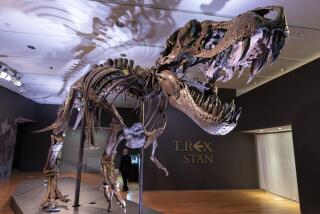A fossilized brain, 520 million years old
Scientists have discovered the fossilized brain of an animal that lived 520 million years ago. It is the oldest mostly intact nervous system to have ever been found.
The incredible ancient brain and nervous system, described in the journal Nature, belongs to an Alacomenaeus, a member of the mega-claw family. These animals earned the name “mega-claw” (megacheiran), because they have two large scissor-like appendages that protrude from the top of their heads.
Megacheirans lived in the early Cambrian-era ocean, swimming and scuttling around with nearly one dozen little legs, or swimmerettes. Scientists believe their bizarre head appendages were used to grab food or feel around their ancient ocean environment.
To the untrained eye the animal looks a bit like a modern day shrimp (see photos in the gallery above), but analysis of its fossilized brain and central nervous system reveal it is more closely related to modern day spiders and scorpions.
Lead author Nick Strausfeld, a neuroanatomist at the University of Arizona, has been searching for intact ancient invertebrate brains to learn when crustaceans (crabs, lobsters, crayfish, shrimp, krill) and chelicerates (horseshoe crabs, spiders, scorpions, ticks) began to differentiate.
From the fossilized brain of mega-claw, which is related to modern day chelicerates, and the fossilized brain of a crustacean that he found last year, he has discovered that even 520 million years ago, crustaceans and chelicerates were already neurologically distinct.
“Their brains have not changed all that much in that time,” he said in an interview with the Los Angeles Times.
Pulling the neurological information from the fossil was a complicated task. Strausfeld searched through thousands of fossils stored at the Yunnan Key Laboratory for Palaeobiology in southwest China to find an ancient fossil with a modern-looking nervous system.
For reasons that Strausfeld cannot explain, iron deposits had selectively accumulated in the animal’s nervous system at the time of fossilization, and that let researchers image the nervous system hundreds of millions of years later.
“We have no idea why the nervous system would be almost stained with these metallic deposits,” he said in an interview with the Los Angeles Times. “It is helpful for our research, but we are really mystified by it.”
Strausfeld said he is planning to return to Yunnan University next May to continue his research.
“We are going to be looking like crazy for anything that would suggest a more simple blend of these two types of brains,” he said.
If you think invertebrate brains are great, not gross, follow me on Twitter for more stories like this.
ALSO:
Photos: Major fossil cache in L.A.
Extreme pumpkins: Is a 1,985-pound pumpkin just too big?
Last blood meal found in belly of 46-million-year-old mosquito fossil







